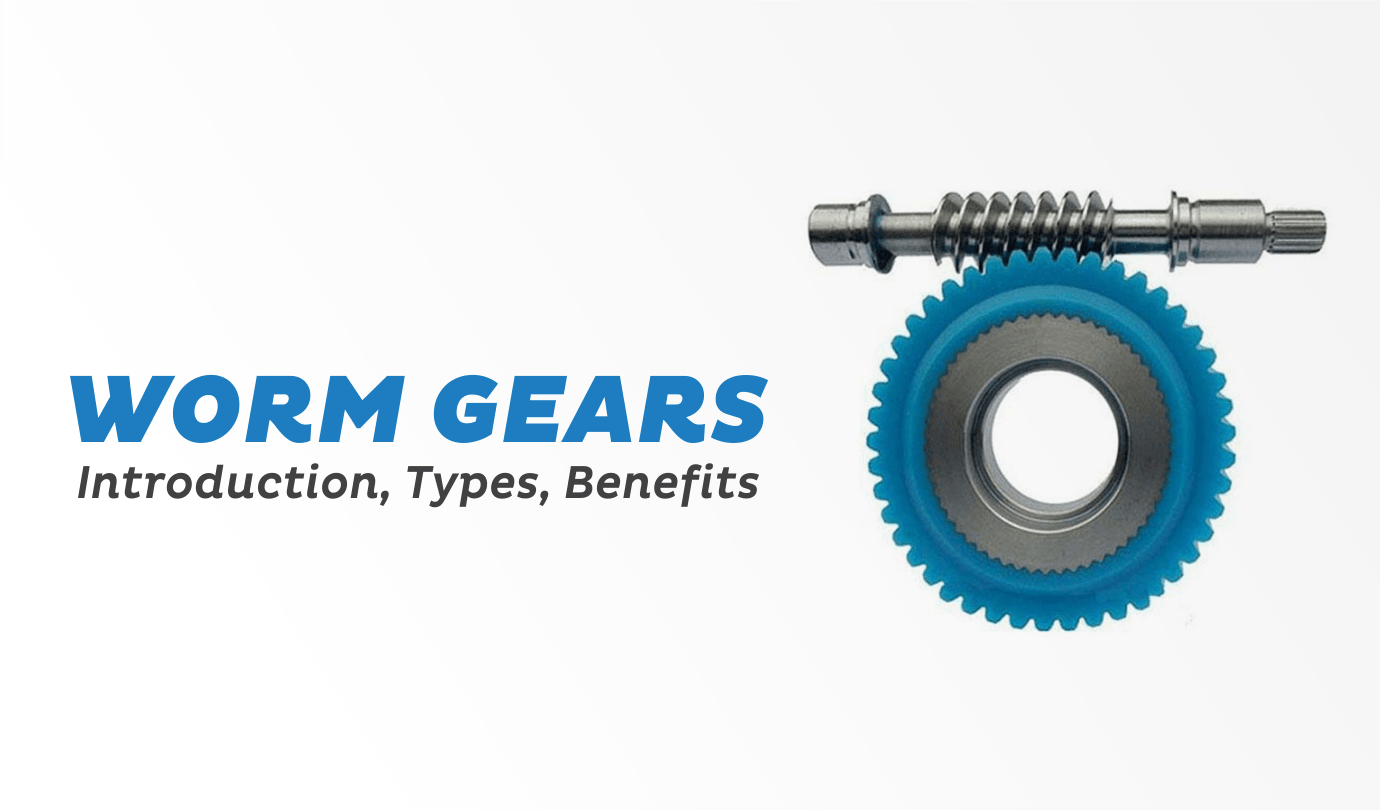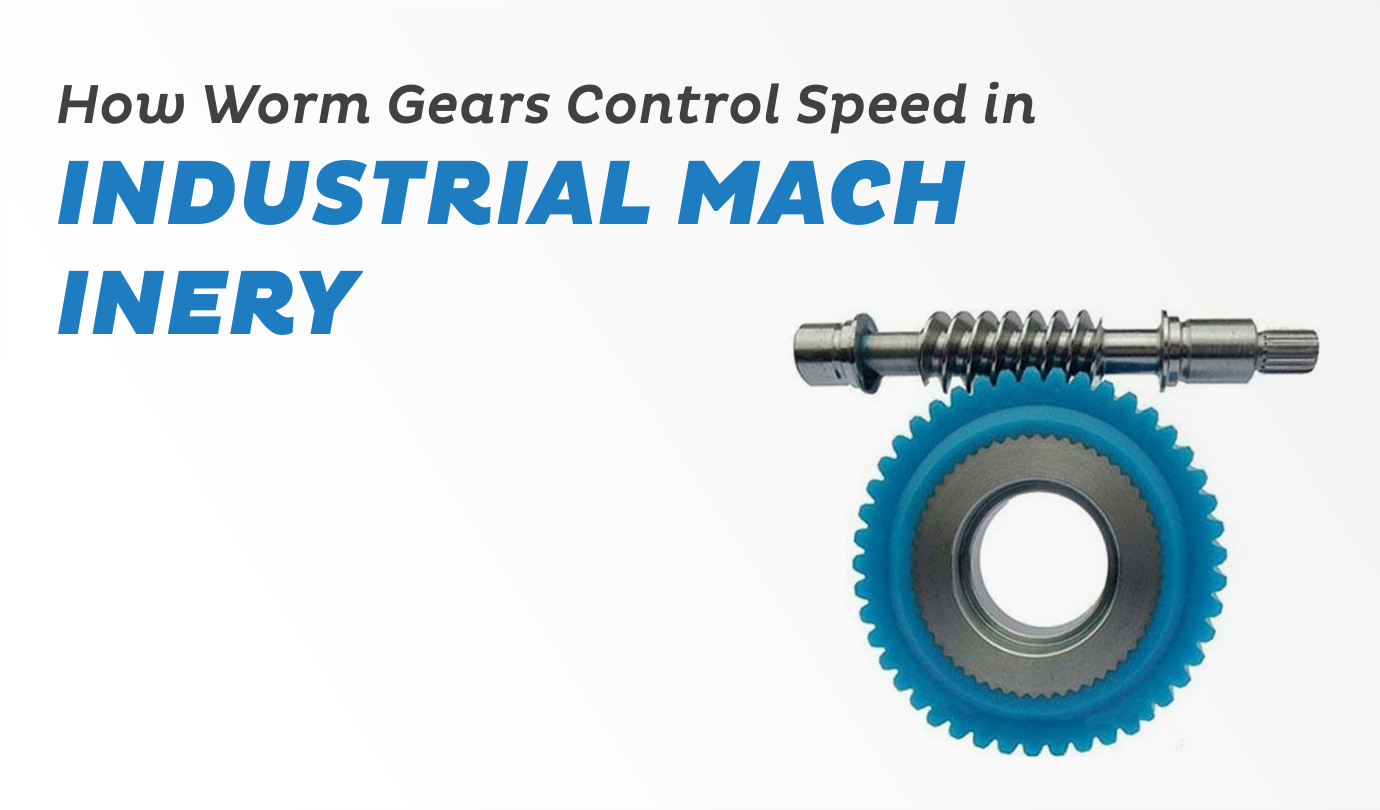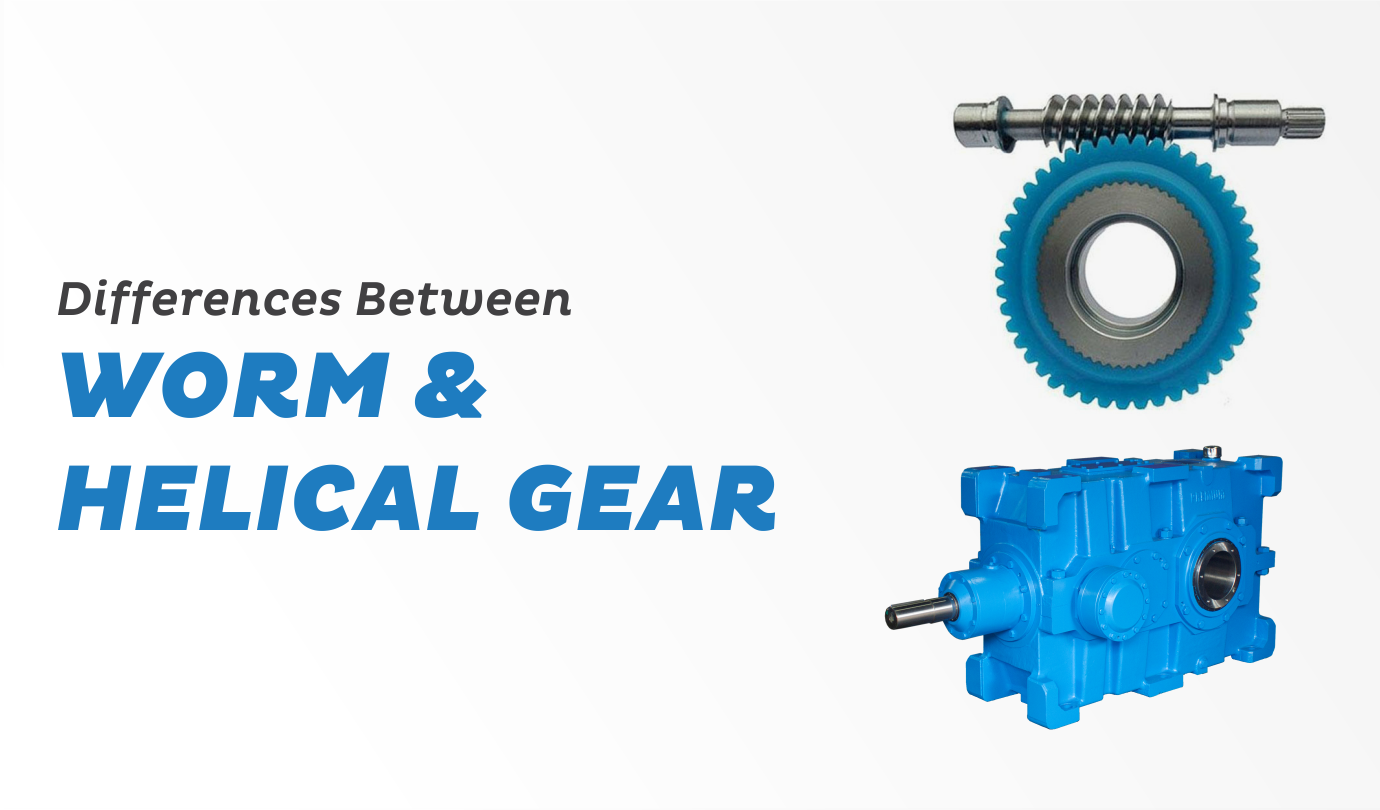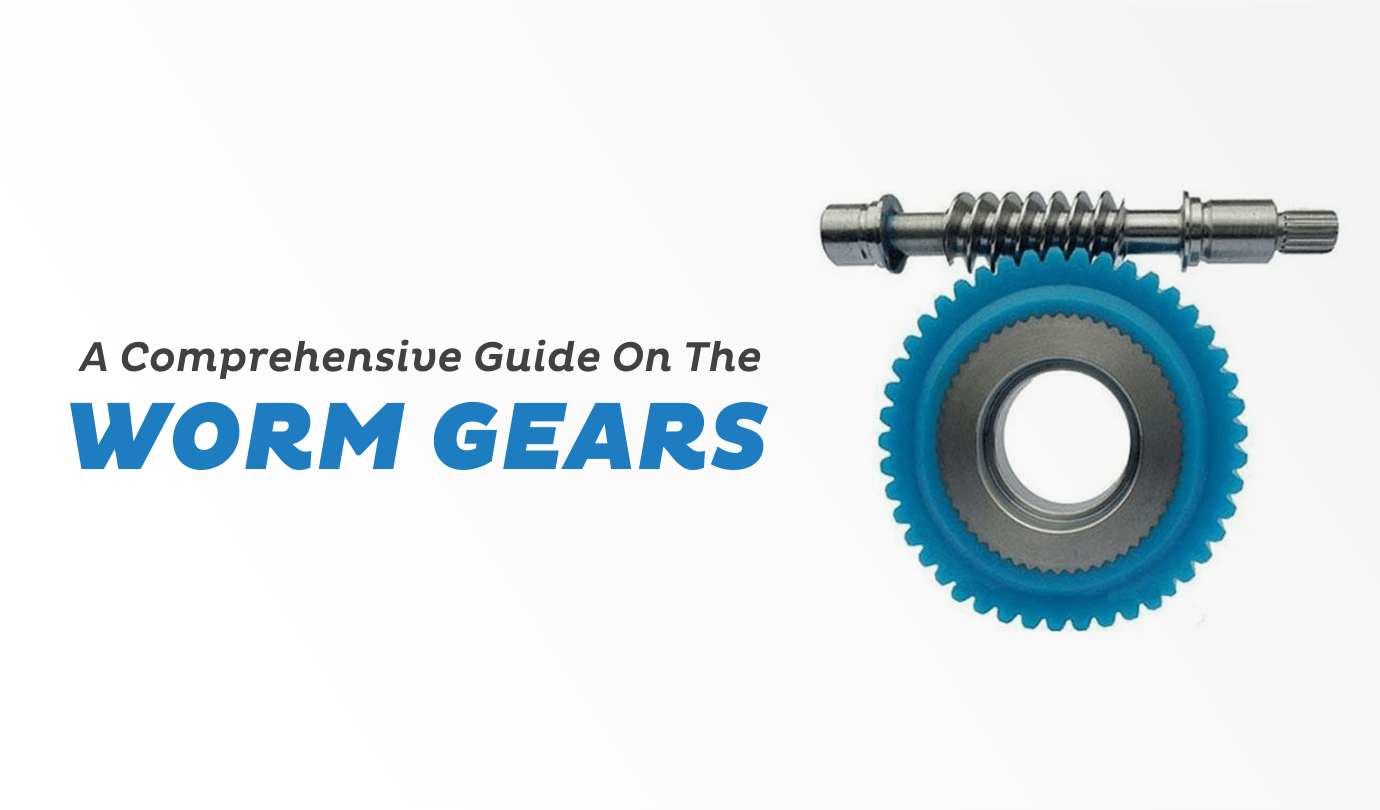Worm gears are used in a variety of applications, including industrial, heavy equipment, and even consumer products. Despite their low efficiency, they can produce extremely high reduction ratios and are, in many situations, self-locking.
Worm gears are unlike any other form of gear, with its own set of properties and applications. In this article, we’ll look at what a worm gear is, as well as its types and benefits.
What Are Worm Gears?
Worm gears are made up of a worm and a gear (also known as a worm wheel), which have non-parallel, non-intersecting shafts that are aligned 90 degrees to each other. The worm resembles a screw with a V-type thread, while the gear resembles a spur gear. Typically, the worm is the driving component, with the worm’s thread advancing the gear’s teeth.
The worm in a worm gear, like a ball screw, can have a single start or many starts, which means the worm has numerous threads, or helices. Each full revolution (360 degrees) of a single-start worm advances the gear by one tooth. As a result, a gear with 24 teeth will result in a 24:1 gear reduction. The gear reduction on a multi-start worm is equal to the number of teeth on the gear divided by the number of starts on the worm.
Different Types of Worm Gears
The axial pitch of the worm in worm gear assemblies must be equivalent to the circular pitch of the bigger gear, which is the first determination made during construction. Axial pitch is the axial distance between the tips of the teeth on the worm, whereas circular pitch is the distance between the teeth points on the pitch diameter. The worm’s threads can be either left or right handed.
The lead is the distance a point on a thread travels during a worm’s revolution. The lead angle is the angle formed by the tangent to the thread helix on the cylinder pitch and the plane to the worm’s axis.
Mentioned below are the different types of worm gears commonly used:
Non-Throated
Non-throated worm gears are helical gears with a straight worm that lack a throat or groove drilled around the worm or worm wheel. Both gears are non-throated and tooth contact is made at a single location on the moving drive. The gear has a single rotating point, which means it is subject to a lot of wear and tear. Non-throated worm gears are easy to construct and are designed to handle minor weights.
Single Throated
For a contact line, a single throated worm gear has incurvate helical teeth constructed around the worm. This sort of worm gear can handle more power without wearing out. Only one set of worm threads makes contact with the worm wheel in this type of worm gear. The worm must be more tougher and stronger than the wheel since there is only one point of contact, which causes tremendous friction.
Double Throated
The form of single throat worm gears and double throat worm gears differs. Worm gears with two throats are concave on both the gear and the worm screw. The form of the worm threads and the teeth of the gear are designed to improve the contact between the wheel and the worm.
Worm gears with two throats can withstand heavy loads. The double throat’s design ensures the tightest possible connection between the worm and the gear.
Benefits of Worm Gears
Worm gears’ main advantage is its capacity to generate high reduction ratios and, as a result, high torque multiplication. In low- to medium-speed applications, they can also be utilised as speed reducers. They are also more compact than other types of gears because their reduction ratio is only based on the number of gear teeth. Worm gears, like fine-pitch lead screws, are self-locking, making them excellent for hoisting and lifting applications.
The worm and the gear mesh through a combination of sliding and rolling motions, with sliding contact predominating at high reduction ratios. Worm gears’ efficiency is limited to 30 to 50% due to friction and heat generated by their sliding movement. The worm and gear are built of dissimilar metals to reduce friction (and thus heat) — for example, the worm may be made of hardened steel and the gear could be made of bronze or aluminium.
Despite the fact that the sliding contact affects efficiency, it operates quietly. (The use of different metals for the worm and gear also contributes to quiet operation.) Worm gears are therefore ideal for applications where noise is a concern, such as elevators. Furthermore, because the gear is made of a softer material, it can absorb shock loads, such as those experienced by heavy machinery or crushing machines.
High-quality Worm Gears From Premium Transmission
Premium Transmission is a well-known worm gears manufacturer since all of our worm gears are custom-made to order. Our customers can count on us to deliver high-quality gears that are tailored to their unique needs. We can meet a wide range of needs, whether you demand high or low volume, large or small size worm gears. If you have any queries or would like a quote, please contact us.













